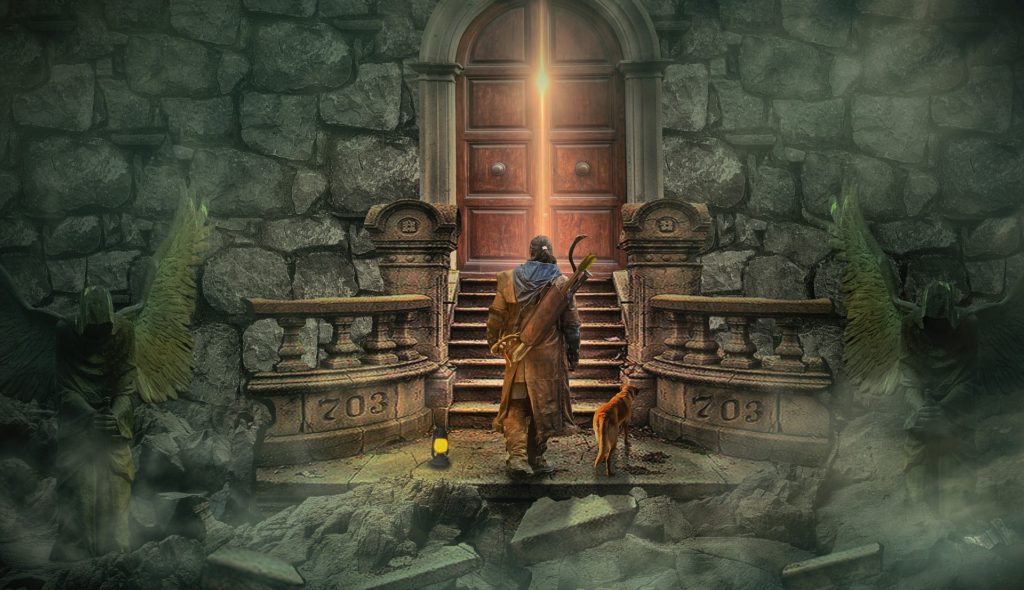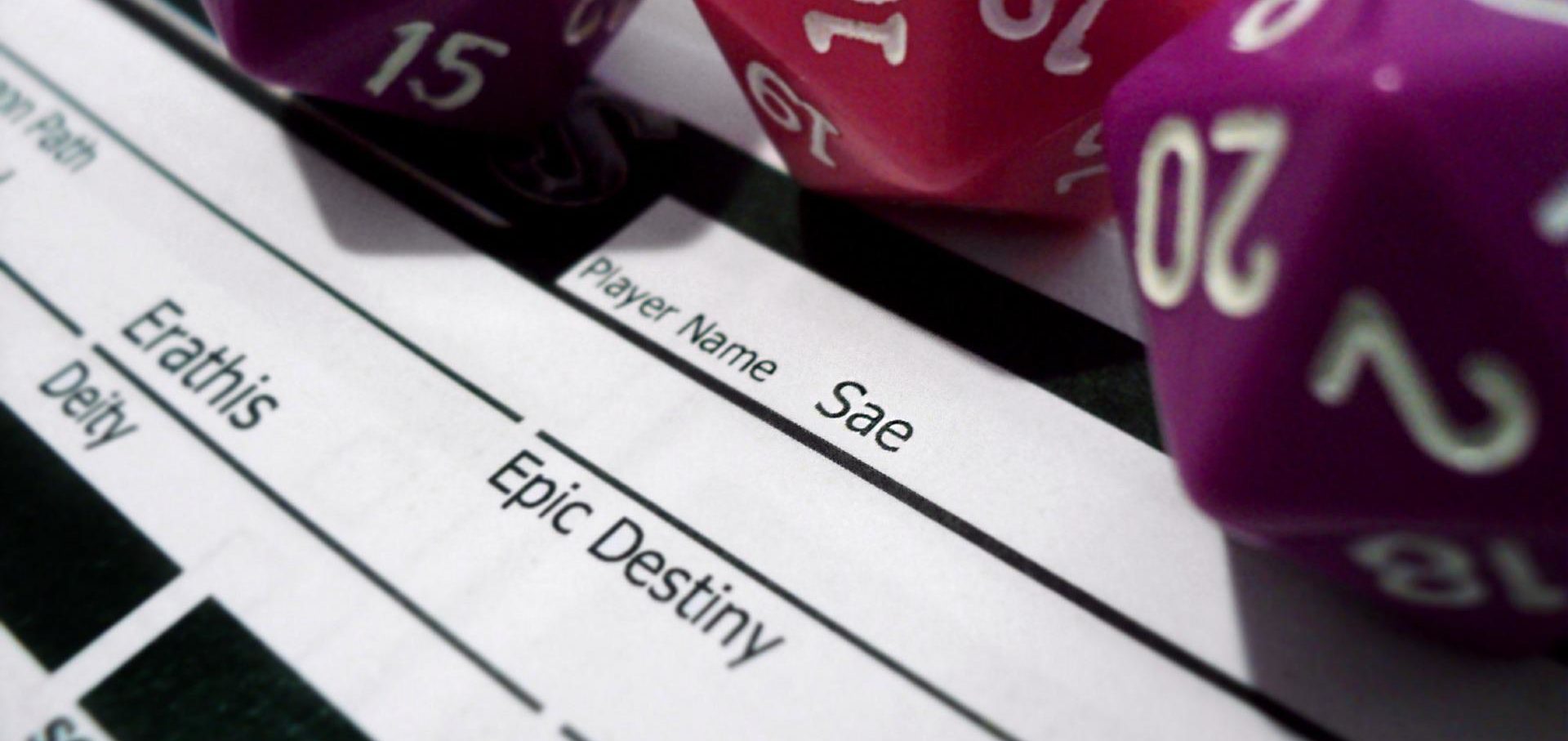We’ve prepared our 6 Best Tips to help new Dungeons and Dragons players get started.
Dungeons and Dragons, also known as D&D, is a popular tabletop role-playing game (TTRPG) that has been around for decades. It’s played by people of all ages and skill levels, and there are many different ways to play this great game.
It doesn’t matter if you’ll be embarking on an epic homebrew campaign, written modules, or getting ready to try your hand at a one-off scenario, there are some basics every new player should keep in mind to get ready.
Tips for New DnD 5e Players
Here’s our list of 6 tips for all new Dungeons and Dragons players:
Tip 1 – Find Your Group
Many of us get introduced to Dungeons and Dragons by our friends who have already played and are looking for new blood around the table. This is a great way to get started since you’ll be familiar with at least a few other players and a better setting for those who have questions about the game.
Otherwise, for those that are looking to play Dungeons and Dragons but don’t have anyone they can turn to, consider joining a local gaming club or open D&D table. Local game stores often host open Dungeons and Dragons games as part of the D&D Adventurers League program. There are lots of resources online to help people get connected like this Meetup group.
It’s important to find a group that you’ll be comfortable with since those with whom you share the table will have a huge impact on your game experience.
Tip 2 – Learn the Basic Rules
To play Dungeons and Dragons, you must read and understand the rules first. There’s no way around it. These rules explain what happens when you make an attack, move, or cast spells. They also describe how characters gain levels, gain new abilities, and gain treasure.
The complete rules are found in the official Dungeons and Dragons Player’s Handbook, commonly referred to as the PHB, published by Wizards of the Coast. This book includes all the rules of play and the content you’ll need to create a character. Other publications are designed to supplement the Player’s Handbook to provide players with more character-building options and rule variants.
New players who are interested in learning the ropes but don’t have a copy of the Player’s Handbook, can read the Free Basic Rules released by Wizards of the Coast, which include the essential gameplay mechanics and a few options for character creation.
Especially as you begin your journey into Dungeons and Dragons, it’s easy to get overwhelmed with rules. We suggest that you focus on the rules and specifics that will relate to your character. In other words, focus on the basic mechanics common to all characters and the specifics of the Class, Race, features, and spells of your first character.
Make sure that you know what edition of the game you’ll be playing since there have been many editions of rules released over the years. The most current Dungeons and Dragons game edition is the fifth edition, commonly referred to as D&D 5E.
Tip 3 – Get Your Dice and Minis
You’ll quickly notice as you go through the D&D rules that you’ll need a few things to get started. At a minimum, new players need access to a set of dice. A standard 7-piece set includes:
- D20 a 20-side die
- D12 a 12-sided die
- Two D10s, 10-sided die. Also rolled together as a D100 for a percentile roll.
- D8 an 8-sided die
- D6 a standard 6-sided die, and
- D4 a 4-sided die.
You’ll find that some dice are used far more than others based on the character you’re playing. For this reason, some players like to have a collection of many dice to play. But, as a new player, a basic set will get you started.
These dice sets are commonly found in your local game store and online shops. These standard dice are also commonly reused for other TTRPGs.
Alternatively, you can use digital dice rollers which are often built into digital gaming platforms or Dungeons and Dragons services, like D&D Beyond. Digital dice rollers may be the best option for many players since they can roll any number of dice and instantly provide the results, which can be time-consuming when rolling manually.
Your Dungeon Master (DM), also known as a Game Master (GM), may ask that you bring a miniature figure, or token, representing your character to use on their tabletop map.
Some games are played entirely online so in this case, having an image on-hand to create a digital token will be best. This is optional but can help bring your Dungeons and Dragons character to life.

Tip 4 – Understand Your Campaign
There are many, many ways to play Dungeons and Dragons with some tables preferring to play strictly by official rules and content. Others may prefer to play based on a story of their own making, commonly referred to as homebrew campaigns. Some will create house rules based on previous editions or personal preferences. There is no wrong way to play Dungeons and Dragons as long as everyone around the table agrees and understands.
But with so many ways to play this game, there are also many complications in running the game smoothly. It’s why it is crucial for any new player to understand what they’re getting into. Before spending too much time investing in a campaign or character, make sure you and your DM are on the same page. Here are some important questions:
- Confirm the game edition, most people are playing D&D 5E, but not all
- Are there any house rules you should be aware of as a player?
- Will the DM accept all sourcebooks and rules released by Wizards of the Coast?
- Will the DM accept Unearthed Arcana supplements released by Wizards?
- Will the DM accept rules, items, and character classes from Third-Party Publishers, like Cult Adventures?
- What setting or style will the game use?
- For example, there’s a huge difference in gaming experience between a combat-focused dungeon crawler versus a narrative-driven game focused on roleplaying.
- As another example, the campaign may be horror-themed and players should be creating setting-appropriate characters and be ready to play according to the theme set by the DM.
There are more to ask but this will help you get the conversation started with your DM.
Tip 5 – Create Your Character
With the basic information you’ve gathered in these first steps, you can now confidently create your Player Character, commonly referred to as a PC. The Player’s Handbook and Free Basic Rules provide all the class details and their abilities that you’ll unlock as you progress through the game. These classes determine what type of features and abilities you will learn as well as how much damage you can do with each attack. The class and sub-class selection will also determine if the player character will have access to spells, their spell list, and the availability of their spells.
Other Dungeons and Dragons publications and third-party content creators will occasionally create a new class or rule variants that may or may not be welcome at your table. This new content may have a drastic impact on the gameplay, which your DM may not appreciate. This is why we suggest you check in with your DM early as they may accept some of these new rules and variants but refuse others.
As a new player, we suggest you focus on a character build that seems fun. We suggest waiting until you’ve become more comfortable with basic gameplay before diving into the complexities and nuances of optimized character builds. There are plenty of ways to get lost in the details and create optimized player characters, however, this is advanced character-building and not always welcome by the DM.
Feel free to reach out to your DM or fellow players and ask for help with this. Many of us, truly love building new player characters and enjoy building them for new players.
Tip 6 – Playing Tips
Our first few Dungeons and Dragons games are always exciting as we discover a new perilous world and work together to complete our first quest. But it’s also easily overwhelming as we get familiar with the rules and fumble through our understanding of our new Player Character’s abilities. For this reason, we suggest that new players take the first few sessions to focus on:
- Listening to your DM as he describes your environment with the people and creatures that you face.
- Being Bold in speaking as your character and interacting with your party to vanquish your foes and complete your quest.
- Planning Ahead while your other party members are taking their actions. Don’t hold up the party by starting to think about your move once your turn begins.
Closing Thoughts
Thanks for reading through our 6 Best Dungeons and Dragons Tips for New Players. We hope this helps you get started with Dungeons and Dragons! You might also be interested in our DnD 5e Character Creation Guide.
It may seem like we’ve covered a lot of ground here but it’s all based on our years of experience with both great games and those that are remembered for their failures.
Dungeons and Dragons is a great game and we encourage new players to give it a try! It’s our hope that this will help the next generation of players come to the table and hear the call of adventuring while avoiding the common traps that come with this dynamic game.
If there are any Dungeons and Dragons 5e topics you would want to be covered in the next article, send us an email info@cultadventures.com or drop it in the comment section!
Cult Adventures is a team of creative, caring developers who create new, fresh Dungeons and Dragons 5e content. We make adventures and game supplements for those who seek fun, new innovative ways to play their favourite game!
Check out our Shop and support our growth!



0 Comments